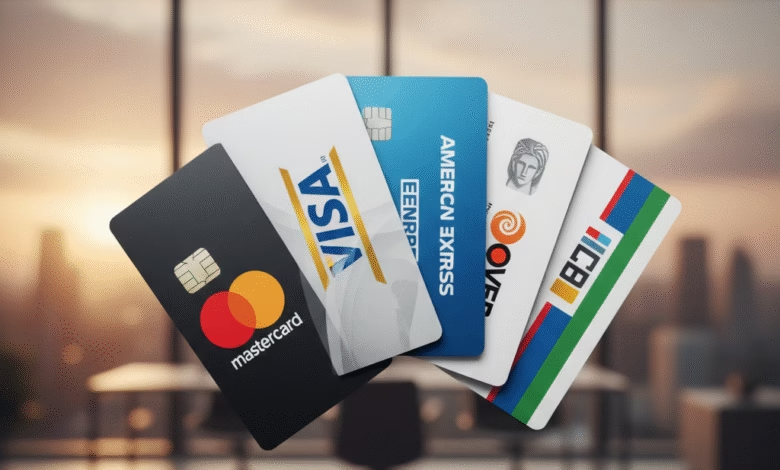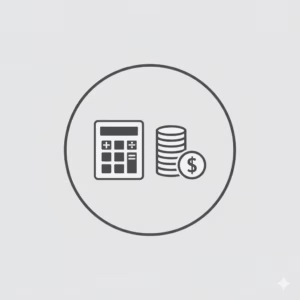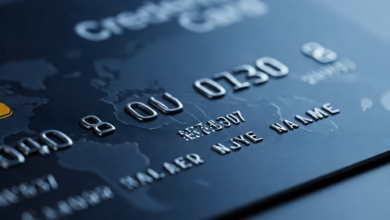How does credit card debt consolidation work?
Understand how debt consolidation works on your credit card

Feeling buried under a mountain of credit card bills? You’re not alone. Each month, millions of Americans stare at multiple statements, each with its own due date, minimum payment, and—worst of all—a high-interest APR that feels designed to keep you in debt forever. It’s a stressful, overwhelming cycle.
But what if you could simplify it all? What if you could combine all those high-interest balances into one single, manageable monthly payment, often with a much lower interest rate?
This is the core promise of credit card debt consolidation.
It’s not a magic wand that makes debt disappear, but it is a powerful financial tool that can give you the breathing room to pay off what you owe, save money on interest, and finally get control of your finances. In this comprehensive guide, we’ll break down exactly how it works, the different methods available, the very real pros and cons, and how to decide if it’s the right move for you.
What Exactly Is Credit Card Debt Consolidation?

At its simplest, credit card debt consolidation is the process of taking out one new, larger loan to pay off multiple smaller debts.
Instead of juggling payments to Visa, Mastercard, and a store card—all at 20% APR or higher—you use the funds from your new loan to pay off those balances completely. You are left with just one loan, one monthly payment, and one interest rate.
The primary goal is twofold:
- Simplicity: You only have to worry about one bill and one due date.
- Savings: The new loan should ideally have a significantly lower Annual Percentage Rate (APR) than the sky-high rates on your credit cards.
This reduction in interest is the key. When you’re paying 22% interest on a credit card, a huge portion of your minimum payment is just feeding the interest, not touching the principal (the actual amount you borrowed). By consolidating to a loan at, say, 9% APR, more of your payment goes directly toward wiping out the debt itself, allowing you to pay it off much faster.
Crucial Distinction: Debt consolidation is NOT the same as debt settlement.
- Consolidation: You are paying back the full amount you owe, just in a more structured and affordable way.
- Settlement: A company negotiates with your creditors to let you pay back less than you owe. This sounds good, but it severely damages your credit score for up to seven years and has major tax implications. Be wary of any company that tells you to stop paying your bills; they are almost always selling settlement, not consolidation.
The 5 Primary Methods for Consolidating Credit Card Debt
“Consolidation” isn’t a single product. It’s a strategy that can be executed using several different financial tools. The best one for you depends on your credit score, the amount of debt you have, and your personal financial situation.
1. The Balance Transfer Credit Card (0% APR Intro Offer)
This is one of the most popular methods, especially for those with good to excellent credit (typically a FICO score of 690 or higher).
How it works: You apply for a new credit card that offers an introductory 0% APR on balance transfers for a set period, usually 12 to 21 months. Once approved, you transfer your high-interest balances from your old cards onto this new card.
You now owe the entire balance to the new card, but you pay zero interest during the promotional period. This gives you a powerful window of time where 100% of your payments (minus any fees) go directly to reducing your principal.
The Catches:
- Balance Transfer Fee: This is the big one. Most cards charge a one-time fee of 3% to 5% of the amount you transfer. If you transfer $10,000, a 5% fee means you’ll instantly owe $10,500 on the new card. You must do the math to ensure the interest you save outweighs this fee.
- The “Cliff”: When the 0% intro period ends, the interest rate “jumps” to a standard, often high, variable APR (e.g., 19% – 29%). It is critical to have a plan to pay off the entire balance before this happens.
- Approval Amount: You might not get approved for a credit limit high enough to transfer all your debt, leaving you to manage the new card and some of your old ones.
Best for: People with good credit and a disciplined plan to pay off the full balance within the 0% APR window.
2. The Personal Loan (A “Debt Consolidation Loan”)
This is the most straightforward method. A personal loan (often marketed as a “debt consolidation loan”) is a type of installment loan.
How it works: You apply for a personal loan from a bank, credit union, or online (fintech) lender for the total amount of your credit card debt. If approved, you receive a lump sum of cash, which you immediately use to pay off all your credit card balances.
You are then left with a simple, fixed-term loan. You’ll make the same payment every month for a set period (e.g., 36 or 60 months), and at the end of the term, you are debt-free.
The Details:
- Fixed Rates: Unlike credit cards, most personal loans have a fixed APR. Your rate and payment will never change, making it incredibly easy to budget for.
- Origination Fees: Some lenders, particularly online ones, charge a one-time “origination fee” that is taken out of the loan proceeds. A $10,000 loan with a 4% origination fee means you’d only receive $9,600. Always look for loans with no origination fees.
- Credit Unions: Don’t just check big banks. Local credit unions often offer the best interest rates on personal loans to their members.
Best for: People who want a predictable, fixed payment and a clear “finish line” for their debt. It’s also more accessible to those with “fair” credit (scores in the mid-600s), though the interest rates will be higher.
3. The Home Equity Loan (HELOAN) or HELOC
If you are a homeowner and have built up equity in your property (meaning you owe less than it’s worth), you can borrow against that equity.
- Home Equity Loan (HELOAN): This is just like a personal loan. You get a lump sum at a fixed rate, which you use to pay off your cards.
- Home Equity Line of Credit (HELOC): This is more like a credit card. You get a revolving credit line you can draw from as needed.
How it works: Because these loans are “secured” by your house, they offer the absolute lowest interest rates available for debt consolidation.
The Catches:
- THE ULTIMATE RISK: This cannot be overstated. You are converting unsecured debt (credit cards) into secured debt. If you fail to make payments on your HELOAN or HELOC, the lender can foreclose on your home.
- Fees: These loans come with closing costs, similar to a mortgage, which can include appraisal fees, application fees, and more, making them expensive upfront.
Best for: Only the most disciplined borrowers who are 100% confident in their stable income and ability to make payments. The risk is significant.
4. The 401(k) Loan
This involves borrowing money from your own retirement savings.
How it works: Most 401(k) plans allow you to take a loan of up to 50% of your vested balance (or $50,000, whichever is less). You pay the loan back to your own account, with interest, through automatic payroll deductions. There’s no credit check, and the “interest” you pay goes back to you.
The Catches:
- Raiding Your Future: You are stealing from your future self. The money you take out is no longer in the market, meaning you miss out on all the potential compound growth, which can cost you tens of thousands of dollars by the time you retire.
- The Job-Loss Trap: If you lose your job or quit, the entire loan balance typically becomes due immediately (or by the next tax-filing deadline). If you can’t repay it, it’s treated as an early withdrawal. You’ll owe income taxes on the full amount plus a 10% penalty.
- Double Taxation: You repay the loan with after-tax dollars, and then you’ll be taxed on that same money again when you withdraw it in retirement.
Best for: This is almost universally considered a last resort option. The risks to your long-term financial security are immense.
5. The Debt Management Plan (DMP) via Credit Counseling
This method is different. You aren’t taking out a new loan. Instead, you work with a non-profit credit counseling agency.
How it works: A certified counselor reviews your entire financial situation, helps you build a budget, and works with your credit card companies to negotiate lower interest rates and waived fees.
If a DMP is a good fit, you will make one single monthly payment to the credit counseling agency. The agency then distributes that money to all your creditors on your behalf accordingto the new plan. These plans are designed to get you out of debt in 3 to 5 years.
The Details:
- Support & Education: This is the only method that comes with built-in financial counseling to help you fix the spending habits that led to debt.
- Fees: Non-profit agencies charge a small, regulated monthly fee for this service (e.g., $25 – $50).
- Impact: You will likely have to agree to close all your credit card accounts enrolled in the plan. This is a good thing for breaking bad habits, but it can temporarily impact your credit score.
Best for: People who feel overwhelmed, need structured support, and want to address their underlying spending behaviors, not just the debt itself.
Analyzing the Real Pros and Cons of Debt Consolidation

This strategy can be a financial lifeline, but it’s important to walk in with your eyes open.
The Advantages (Pros)
- Financial Simplification: One monthly payment is infinitely easier to track and budget for than five or six.
- Lower Interest Rate: This is the biggest win. Dropping your average APR from 22% to 9% can save you thousands of dollars and shorten your repayment time by years.
- Fixed Payoff Date: Unlike the credit card “minimum payment trap,” consolidation loans (like personal loans or DMPs) have a fixed term. You know exactly when you’ll be debt-free.
- Potential Credit Score Boost: This is a big one. We’ll cover it in detail in the next section, but by converting revolving debt to an installment loan, you can dramatically lower your “credit utilization ratio,” which is a major factor in your FICO score.
The Disadvantages (Cons)
- It Doesn’t Solve the Root Problem: Consolidation is a symptom fix, not a cause fix. If you haven’t addressed the overspending or lack of budgeting that led to the debt, you are at high risk of “reloading”—running up the balances on your now-empty credit cards on top of having the new consolidation loan. This is how people end up in twice the debt.
- Upfront Costs and Fees: Balance transfer fees and loan origination fees can eat into your potential savings.
- No Guarantee of Approval: You need a decent credit score and provable income to qualify for the best methods (balance transfer cards and low-rate personal loans).
- Risk of Deeper Debt: Using a HELOC can turn a financial setback (credit card debt) into a catastrophe (losing your home).
How Does Debt Consolidation Affect Your Credit Score?
This is one of the most common—and complex—questions. The impact isn’t a simple “up” or “down.” It affects your score in several ways, both short-term and long-term.
The Short-Term Impact (The Temporary Dip)
When you first apply for consolidation, your score will likely take a small, temporary hit.
- Hard Inquiry: When you apply for a new loan or balance transfer card, the lender pulls your credit report. This is a “hard inquiry,” which can temporarily ding your score by a few points. (Pro-tip: If you “rate shop” for a loan within a 14-30 day window, multiple inquiries are often treated as one, minimizing the damage).
- New Account: Opening a new account lowers the “average age” of your credit history. A shorter history is seen as riskier, which can also dip your score slightly.
The Long-Term Impact (The Potential Boost)
This is where consolidation really shines for your credit health.
- THE BIG ONE: Credit Utilization Ratio (CUR)
This is the most important factor after payment history. CUR measures how much of your available revolving credit you are using. Someone with $10,000 in credit limits who owes $9,000 has a 90% utilization ratio—a huge red flag.
When you pay off those $9,000 in credit card balances with a personal loan (an installment loan), your revolving utilization instantly drops from 90% to 0%. This shift is massive and can cause your credit score to jump significantly. You’ve shown you’re no longer “maxed out.”
- Improved Payment History: By simplifying your bills into one, you dramatically reduce the risk of missing a payment. A consistent, on-time payment history is the single best way to build a strong credit score.
- Better Credit Mix: Lenders like to see that you can responsibly manage different types of debt. Having an installment loan (the consolidation loan) in addition to your (now zero-balance) credit cards can positively impact your “credit mix.”
Is Credit Card Debt Consolidation the Right Move for You?
So, how do you know if you’re the right candidate? Ask yourself these tough questions.
Consolidation Might Be a Great Idea If…
- You have a steady, reliable income and can comfortably afford the new, single monthly payment.
- Your total debt is high enough to be overwhelming (e.g., $5,000+) but not so high that you can’t realistically pay it off in 3-5 years.
- Your credit score is in the “fair” to “excellent” range (640+), allowing you to qualify for a rate that is actually lower than what you’re currently paying.
- You are 100% committed to changing your spending habits. You’re ready to build a budget, stop using credit cards for daily purchases, and focus on becoming debt-free.
Consolidation is Probably a Bad Idea If…
- Your debt is small enough to be paid off in 6-12 months with a little belt-tightening. The fees might not be worth it.
- You don’t have a stable source of income. You won’t be approved for a good loan, and you’ll just be swapping one payment you can’t afford for another.
- You have poor credit (sub-600). You are unlikely to be approved for a loan with an interest rate lower than what your credit cards are already charging, defeating the whole purpose.
- You know, deep down, that you will see those $0 balance credit cards as a new “opportunity” to spend. If you don’t trust yourself, do not consolidate. Opt for a DMP instead, where closing the accounts is part of the plan.
Step-by-Step: How to Apply for Debt Consolidation

If you’ve weighed the options and are ready to move forward, here is the action plan.
- Step 1: Know Your Enemy.
You can’t make a plan until you know the facts. Make a list of all your credit card debts: the creditor, the total balance, and (most importantly) the exact APR. Add it all up. This is your target number.
- Step 2: Check Your Credit Score.
Get your FICO score. You can often get this for free from your bank or existing credit card company. This score will determine which options are even available to you.
- Step 3: Shop Around and Compare.
- For Personal Loans: Get pre-qualified offers from at least three places: a local credit union, your primary bank, and a major online lender (e.g., SoFi, Marcus, LightStream). “Pre-qualification” uses a soft pull and won’t hurt your credit. Compare the APR, loan term, and any origination fees.
- For Balance Transfer Cards: Use an online comparison tool to find the best 0% APR offers. Look at the intro period (12, 18, or 21 months) and the balance transfer fee (aim for 3%).
- Step 4: Do the Math.
Will this new option actually save you money? A 3% balance transfer fee on $15,000 is $450. Is that less than the interest you’d pay on your old cards over the 18-month intro period? (The answer is almost always yes, but you must check).
- Step 5: Apply and Execute.
Once you’re approved, the final step is crucial.
- If it’s a personal loan, the lender will deposit the cash in your bank account. You must immediately and manually log in to every one of your credit card accounts and pay them off in full.
- If it’s a balance transfer card, you will provide the old account numbers to the new card issuer, and they will handle the transfer for you (it can take 7-14 days).
- Step 6: The Big Decision: Close the Old Cards?
Once your old cards have a $0 balance, what do you do?
- The Case for Closing: It’s the safest way to remove temptation. You can’t spend on a closed account.
- The Case for Keeping Open: Closing accounts (especially your oldest ones) can lower your “average age of accounts” and reduce your “total available credit,” which can temporarily hurt your credit score.
- The Hybrid Approach: Keep your one or two oldest credit cards open (to preserve your credit history), but cut them up or lock them in a safe. Close all the newer/store cards.
What Are the Alternatives if Consolidation Isn’t an Option?
If your credit is poor or you don’t qualify for a good consolidation loan, you are not out of options. These two “DIY” methods are incredibly effective and require no new loans.
The Debt Snowball Method
Popularized by Dave Ramsey, this method focuses on behavioral psychology and motivation.
- List your debts from smallest balance to largest, regardless of interest rate.
- Make minimum payments on all debts except the smallest one.
- Throw every extra dollar you have at that smallest debt until it’s gone.
- Once it’s paid off, you get a quick, powerful “win.” You then roll the payment you were making on that debt into the payment for the next-smallest debt.
- This creates a “snowball” of momentum, and you’ll feel more motivated as you knock off each debt.
The Debt Avalanche Method
This is the mathematically fastest and cheapest way to get out of debt.
- List your debts from highest APR to lowest, regardless of balance.
- Make minimum payments on all debts except the one with the highest interest rate.
- Throw every extra dollar at the highest-APR debt.
- Once it’s paid off, roll that entire payment onto the debt with the next-highest APR.
- This method saves you the most money on interest, though it may take longer to get your first “win” if your highest-APR card also has a large balance.
A Tool, Not a Cure

Credit card debt consolidation is a powerful strategy. It can clear the clutter from your financial life, provide a clear path out of debt, and save you a significant amount of money.
But it is a tool, not a cure. It transfers your debt; it does not eliminate it. The real work begins after you consolidate. The real work is building a budget, tracking your spending, and committing to a new set of financial habits.
If you can pair the smart financial move of consolidation with the disciplined personal change of a budget, you won’t just get out of debt. You’ll build a foundation for a secure and prosperous financial future.





